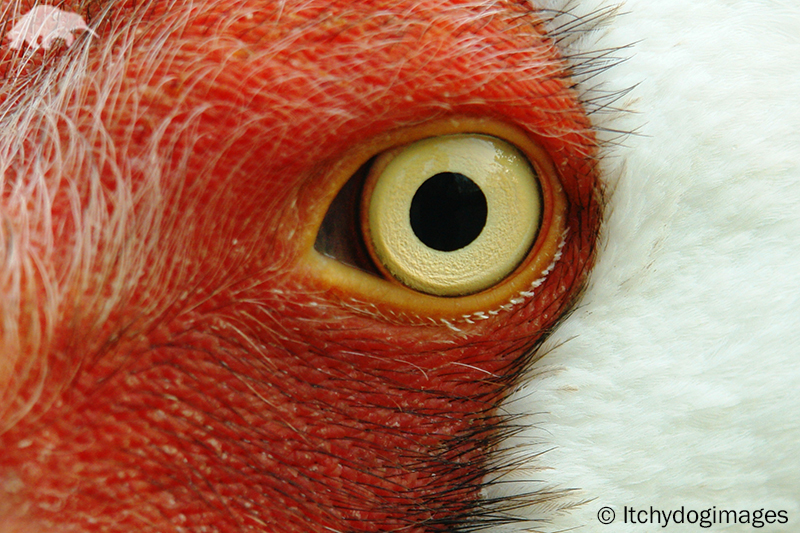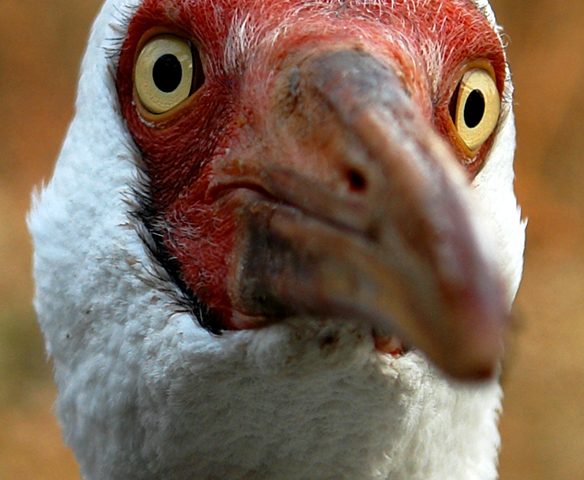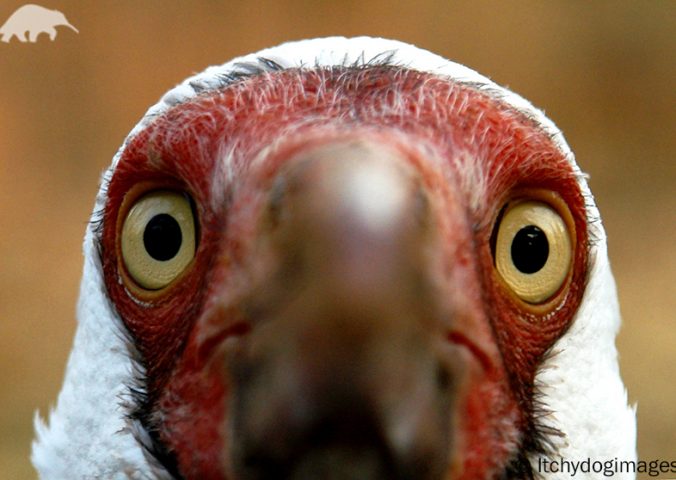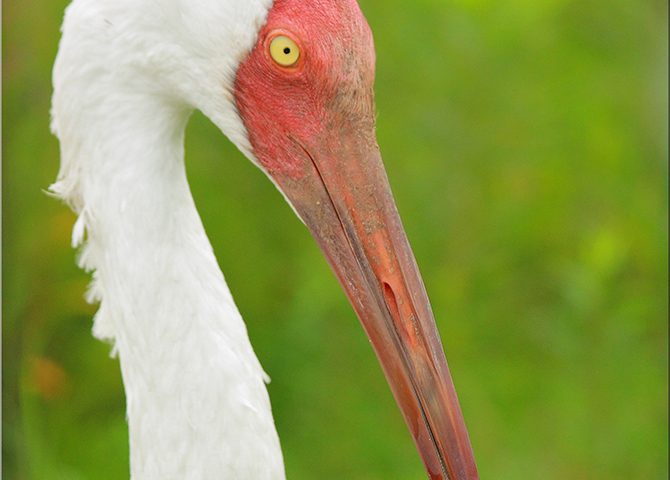About
This large white crane, with its elegant long legs and neck, stands at well over a metre in height.
A deep red mask covers the bird’s face from its bill to behind the eyes. This Critically Endangered bird is third rarest and the most threatened species of crane in the world. The species breeds in Russia and winters in China, Iran, and formerly in India, undertaking a 5,000 km migration through seven other countries. It is found in wetland habitats throughout the year along its migratory route and at wintering and breeding sites. It is highly dependent on wetlands and is the most aquatic member of the Gruidae family. Nests are large mounds, which are often partially submerged in shallow water. Illegal hunting in western/central Asia has contributed to the serious decline in numbers. Habitat loss, especially due to changing hydrology is the main threat to the eastern population. In recent decades, small populations of Siberian Cranes in West and Central Asia have almost disappeared; the only viable population of this species now occurs in eastern Asia, migrating 5,000 km from the Yakutian tundra of Russia across highly developed eastern China to winter at Poyang Lake in the mid Yangtze River Basin. The migration corridor is very narrow, so that almost all birds must stop to rest on a limited number of wetlands with hydrology that varies considerably from year to year due to rainfall and human activities.
- Order: Gruiformes
- Family: Gruidae
- Population: 3,500-4,000
- Trend: decreasing
- Size: 140cm
- Weight: 6kg
EDGE Score
Distribution
This species breeds in Yakutia and West Siberia in Russia. Non-breeders of the eastern population spend their summer months in the far north with a few birds summering in Dauria in areas along the border region of China, Russia and Mongolia. Ninety-nine percent of cranes spend the winter at Poyang Lake in China.
Habitat and Ecology
This species is found in wetland habitats throughout the year, favouring shallow, fresh water with a high level of clarity and have a low tolerance for human disturbance. They are omnivores, eating roots, seeds, sprouts and tubers of aquatic plants, and also fish, rodents, insects and various other small animals. The crane typically undertakes its annual migration at the end of September and it is thought to arrive at final wintering grounds in China and Iran in November or December. The cranes start the return journey in March or April, arriving at breeding grounds in late May.






